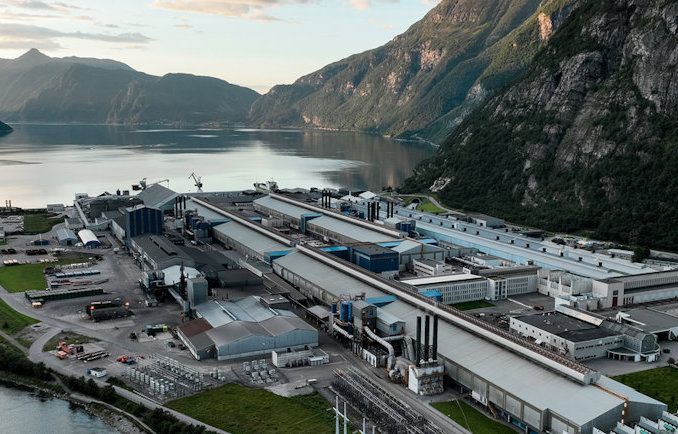
Hydro was granted NOK 39.6 million (US$3.78 million) in soft funding from Enova, an enterprise established by the Norwegian Government, for a project that could have global impact on hard-to-abate industries. The company will begin testing emission-free plasma technology in the casthouse at its Sunndal aluminum smelter in Norway.
“We aim to change the game for aluminum production,” said Eivind Kallevik, executive vice president for Hydro Aluminium Metal. “Plasma technology is both high tech and future oriented. If we succeed with the pilot project at Sunndal it will not only affect the aluminum industry, but also other hard-to-abate industries worldwide.”
Remelting aluminum into new products requires extremely high temperatures — an energy intensive process that traditionally uses fossil energy in the form of natural gas. However, new plasma technology provides a potential solution, enabling the electrification of the process, which would make it possible to use the same renewable energy that powers Hydro’s primary smelters.
Plasma is called “the fourth state of matter” after solid, liquid, and gas. The gases become electrically conductive through the addition of energy, which makes it possible to achieve temperatures far higher than 5,000°C. With a plasma torch, an electric arc is formed which heats the metal in the furnace by means of radiation and convection.
The pilot will replace the current burner based on natural gas with a plasma burner in an existing industrial scale furnace at the Sunndal R&D test center for alloy development, testing, and technology development. The pilot is expected reduce carbon emissions by over 500 tonnes annually, but the global potential for reducing emissions from aluminum casthouses and recyclers is about 11 million tonnes of CO2.
Hydro aims to melt the first aluminum using plasma technology in the casthouse at Sunndal in the fourth quarter of 2025.
Path to Zero
Hydro aims is to achieve zero emissions across its entire aluminum value chain by 2050. Hydro Sunndal, Europe’s largest and most modern aluminum plant, also serves as test site for capturing carbon emissions from the existing electrolysis process.
In the fall of 2023, Hydro also decided to invest in a test facility in Porsgrunn to further develop HalZero, an entirely new technology for primary aluminum production that will eliminate carbon emissions from both electrolysis and anode baking.
“We are working closely with Europe’s most demanding customers to help them achieve their climate ambitions through the use of low-carbon and recycled aluminum,” said Kallevik. “We are proud to offer aluminum based on renewable energy and with 75% lower carbon footprint than the global average.”
